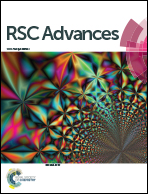Synergistic effects in mechanical properties of PLA/PCL blends with optimized composition, processing, and morphology
Abstract
Poly(lactic acid) (PLA) is a promising material for biomedical applications due to its biodegradability and high stiffness, but suffers from low toughness. We report that blending of PLA with another biodegradable polymer, poly(ε-caprolactone) (PCL), can increase the impact strength above the values of the individual components, while the other important macro- and micromechanical properties remain at well-acceptable level (above the theoretical predictions based on equivalent box model). Although some previous studies indicated incompatibility of PLA and PCL polymers, we demonstrate that the melt-mixing of the polymers with optimized viscosities (PLA/PCL viscosity ratio ∼ 1), the optimized composition (PLA/PCL = 80/20 by weight), and the optimal processing (compression molding with fast cooling) leads to optimal morphology (∼0.6 μm particles of PCL in PLA matrix) and synergistic effect in the mechanical performance of the systems. In an additional set of experiments, we show that the addition of TiO2 nanoparticles slightly improves stiffness, but significantly reduces the toughness of the resulting nanocomposites. The investigated systems were characterized by electron microscopy (SEM and TEM), notched impact strength, dynamic mechanical analysis, and microindentation hardness testing.


 Please wait while we load your content...
Please wait while we load your content...